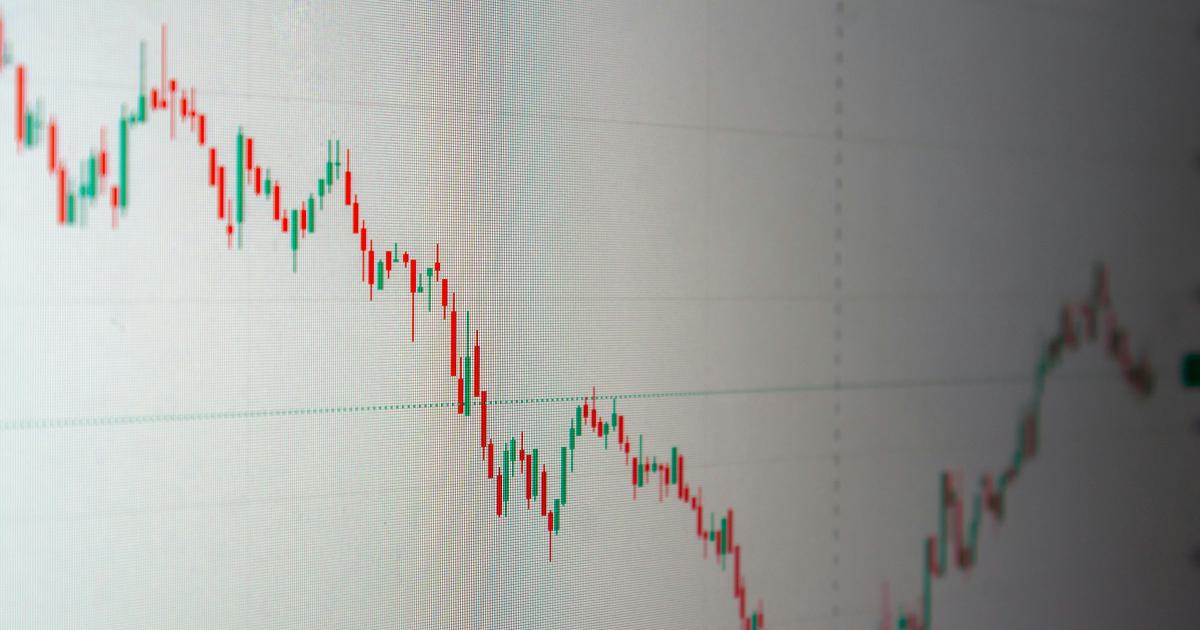8 Essential Tips for Backtesting Trading Strategies

Backtesting trading strategies is a critical step for traders and investors who wish to ensure that their methods work in historical market conditions. In the world of finance, having a reliable backtesting framework can distinguish a successful trading system from an unproven idea. By using proper historical data, robust software, and a deep understanding of market behavior, you can gain greater insight into the potential risks and rewards of your strategy. This article discusses eight essential tips to help you rigorously backtest trading strategies, ensuring that your approach is methodical, comprehensive, and ready for real-world challenges.
1. Understand the Importance of Historical Data
Historical data forms the backbone of any effective backtesting framework. The quality and breadth of your data directly influence the accuracy of your results. When examining market behavior, comprehensive historical data provides insights into how a trading strategy might perform under various market conditions.
Why Historical Data is Critical
Historical data carries the record of market sentiments, high and low volatility periods, and responses to economic or political events. Therefore, the selection process should consider:
- The time span covered.
- The granularity of the data (daily, hourly, minute-by-minute).
- Adjusted versus non-adjusted data.
- The inclusion of dividends, splits, and other corporate actions.
Using low-quality or insufficient historical data can introduce bias, leading to results that may not accurately reflect real market behavior. For effective backtesting trading strategies, it is necessary to correlate past market responses with potential future trends.
Types of Data to Consider
Price Data: Open, high, low, and close prices are fundamental for technical analysis.
Volume Data: Tracks the number of shares traded or contracts exchanged, providing insights into market momentum.
Fundamental Data: Includes earnings, revenue, and even market sentiment indicators.
Alternative Data: Social media trends, web traffic statistics, and news sentiment analytics offer modern angles on market behavior.
Real-World Example
Imagine testing a moving average crossover strategy using 10 years of historical stock price fluctuations. During periods of high volatility, the strategy is likely to show different performance compared to more stable periods. This divergence underscores the importance of a diverse dataset when determining a strategy's robustness.
In essence, adopt a proactive stance on data selection. Evaluate multiple sources and cross-check data to ensure you're working with the most accurate and representative set possible. This rigorous approach is essential when aiming to build confidence in your backtesting outcomes.

2. Select Reliable Data Sources
One of the major pitfalls in backtesting trading strategies is using unreliable or incomplete data sources. Without trustworthy data, even the best-designed strategies may fail in simulated tests.
Combining Multiple Data Providers
Relying on a single data provider might lead to biased results due to errors or omissions in the dataset. Consider aggregating data from multiple reputable sources such as:
- Official stock exchange feeds.
- Financial data services like Bloomberg, Reuters, or Quandl.
- Publicly available databases from regulatory bodies.
Evaluating Data Integrity
Before integrating datasets into your backtesting software, assess the following:
- Validation: Ensure all datasets are error-free and consistent.
- Coverage: Check that the datasets cover all the relevant securities and time periods.
- Format Compatibility: Make sure the data is in a usable format (CSV, JSON, etc.) that your system can easily parse.
Steps to Verify Data Quality
Cross-Check Historical Events: Validate significant market events against trusted historical records.
Filter and Clean: Implement data cleaning procedures to handle missing values, outliers, or inconsistent records.
Benchmark Against Known Patterns: Compare your data against known patterns to detect any anomalies that could skew results.
Case Study
Consider a trader backtesting a trend-following strategy who discovered that a particular dataset from a single source frequently missed recording stock splits. When this oversight was corrected by verifying data with another provider, the results adjusted significantly, leading to better strategy calibration. This example highlights the necessity of using multiple data sources to mitigate risk.
3. Use Robust Backtesting Software
A successful backtest is only as good as the tool you use to implement it. While spreadsheets might work for simple strategies, advanced trading systems demand specialized backtesting platforms that offer flexibility, speed, and sophistication.
Key Features to Look For
- Custom Script Capability: The ability to program custom strategies using a language like Python or R.
- Speed and Efficiency: Fast processing of large datasets to deliver timely results.
- Accuracy: Precise simulation of real-world trading conditions, including slippage, commissions, and liquidity concerns.
- Visualization Tools: Graphical representations of backtest performance, equity curves, and risk metrics.
Popular Backtesting Platforms
MetaTrader: Widely used for forex trading, equipped with strategy testing tools.
QuantConnect: An open-source platform that supports multiple asset classes and leverages the power of cloud computing.
Amibroker: Offers powerful charting and analytic tools.
Backtrader: An open-source Python framework that provides tremendous flexibility for custom strategies.
TradeStation: Known for its comprehensive suite of tools and integrated development environment.
Software Walkthrough
Imagine using a platform like Backtrader to simulate a complex algorithmic trading strategy. The platform can execute your code over several decades of minute-by-minute data, applying realistic trading rules and fee structures. This granular approach allows you to spot vulnerabilities, such as periods of adverse market conditions or specific parameters where your strategy underperforms.
Example Scenario
A trader uses QuantConnect to backtest a momentum-based strategy. With built-in risk management tools, they simulate different market conditions by adjusting parameters like stop-loss levels and trade sizes. The platform’s visualization options highlight where the strategy performs best and where it falters, enabling refinements before real money is at risk.
Utilizing robust backtesting software is a cornerstone for evaluating potential trading strategies comprehensively. It bridges the gap between theoretical models and real-world trading scenarios, ensuring that your backtesting trading strategies can reasonably estimate future performance.
4. Incorporate Real-World Trading Conditions
An essential component of backtesting trading strategies is the accurate replication of real-world trading conditions. This is paramount for building confidence in the strategy’s performance when deployed live.
Simulating Market Realism
To simulate realistic trading conditions, consider the following factors:
- Liquidity Considerations: Ensure that your strategy accounts for the ease with which assets can be bought or sold without impacting the market significantly.
- Slippage: Real trades often execute at prices slightly different from those expected. Incorporate slippage into your model.
- Transaction Costs: Factor in commissions, spreads, and other fees.
- Market Impact: On high volumes, the strategy's trading itself can move prices. Incorporate modeled market impact.
Stress Testing
Stress testing involves simulating extreme market conditions to observe how your strategy might hold up under intense volatility or sudden market crashes.
Historical Crises: Use data from market crashes or periods of extreme volatility.
Hypothetical Scenarios: Create scenarios that extrapolate beyond historical experience such as sudden regulatory changes or black swan events.
Example Walkthrough
Consider a scenario where a strategy was backtested across multiple market crashes. By simulating the increased spread, slippage, and lower liquidity conditions during these periods, the trader is able to see the effect on the overall performance. Adjustments might include increasing the stop-loss size or avoiding certain assets during highly volatile periods.
Interpreting Stress Test Results
Carefully analyze the stress test outcomes to determine if the strategy can survive drastic market movements. It is worth noting that a strategy that performs exceedingly well in calm markets might collapse under stress. Fine-tuning risk management parameters based on these results can prevent significant future losses.
Incorporating real-world trading conditions into the backtesting process brings a level of realism that is otherwise difficult to achieve purely in theoretical simulations. This step provides the necessary confidence that the strategy will be robust in live markets.

5. Perform Sensitivity Analysis
Sensitivity analysis plays a pivotal role in understanding how changes in market conditions or strategy parameters impact the overall performance of a trading model. It helps traders identify which variables are most crucial to the strategy’s success.
What is Sensitivity Analysis?
Sensitivity analysis involves systematically varying key parameters to see how changes affect the outcome. This approach helps in pinpointing:
- Optimal parameters.
- Threshold points where minor changes can produce significant effects.
- Parameters that are less critical and may be adjusted freely.
Methodologies in Sensitivity Analysis
Parameter Sweeps: Adjust one parameter at a time while holding others constant.
Monte Carlo Simulations: Run numerous scenarios with randomly varied inputs to understand a range of potential outcomes.
Scenario Analysis: Focus on specific historical events and determine how the strategy performs under those particular conditions.
Benefits of Conducting Sensitivity Analysis
- Identify Optimal Settings: Traders can fine-tune parameters such as stop-loss levels, take-profit levels, and moving average periods.
- Increase Confidence: By understanding the tolerances, a trader can better judge if the strategy is robust or fragile.
- Risk Management: Helps in determining if the strategy's performance is overly reliant on specific market conditions.
Real-World Application
A trader backtesting a technical indicator-based strategy performs a parameter sweep across different moving average lengths. The analysis reveals that performance is particularly sensitive when the period is below a certain threshold. Recognizing this vulnerability, the trader adjusts the strategy to avoid extreme sensitivity, leading to more stable performance across various market environments.
Implementation Steps
Define a range of plausible values for each parameter.
Run multiple backtests while varying these parameters systematically.
Analyze the results to identify any parameters that cause significant performance changes.
Document insights and incorporate findings into the strategy’s final design.
By conducting thorough sensitivity analysis, you are better equipped to understand and mitigate the risk factors inherent in your strategy. This step is a crucial underpinning in ensuring that your trading model withstands not only normal market conditions but also unexpected fluctuations.
6. Optimize Without Overfitting
Optimization is a double-edged sword. While tweaking your strategy to improve performance in historical data is appealing, over-optimizing and overfitting the model can lead to disastrous performance when deployed live.
What is Overfitting?
Overfitting occurs when a model is excessively customized to past data, capturing noise rather than the underlying patterns. This results in a system that performs exceptionally well on historical data but poorly on out-of-sample data.
Strategies to Avoid Overfitting
Out-of-Sample Testing: Reserve a portion of historical data for validation separate from the training data.
Walk-Forward Analysis: Continuously update and test the strategy over successive time periods.
Regularization Techniques: Implement methods to penalize overly complex models.
Simplicity: Favor simpler models that are easier to interpret and less likely to be overfitted.
Practical Tips
- Limit Parameter Count: Each additional parameter increases the risk of overfitting.
- Cross-Validation: Use multiple segments of the historical data to validate your model’s performance.
- Evaluation Metrics: Focus not only on returns but also on risk-adjusted performance metrics such as Sharpe Ratio or Maximum Drawdown.
Case Study: Avoiding the Pitfalls
A quantitative hedge fund experienced dramatic drawdowns after optimizing their algorithm too tightly. They conducted extensive in-sample testing and then switched to rigorous out-of-sample validation, incorporating walk-forward analysis. This pivot revealed that many previously “profitable” configurations were not robust, leading to a redesign that better accounted for dynamic market changes.
Final Recommendations
When optimizing your backtesting trading strategies, avoid the temptation to let historical “success” drive every decision. Instead, prioritize robustness by ensuring that your strategy performs well over multiple market cycles and under varying conditions. Rigor, transparency, debugging, and iterative validation are keys to maintaining a balance between optimization and overfitting.
7. Keep Detailed Records and Analyze Performance Metrics
Maintaining detailed records of your backtesting experiments is crucial for continuous improvement. Analyzing performance metrics helps you understand how and why a strategy is working or failing, facilitating data-driven decision-making.
Importance of Record Keeping
Accurate record keeping assists in layering insights and identifying patterns over time. It provides:
- A history of parameter changes.
- Versions of strategies and their corresponding performance.
- Documentation of market conditions during testing.
Metrics to Monitor
Total Return: Overall profit or loss over a testing period.
Drawdown: Maximum loss from a peak to a trough, which is vital for understanding risk.
Win/Loss Ratio: Helps in evaluating whether the strategy's success depends on a few large wins or many small wins.
Sharpe Ratio: Adjusts return by the risk taken, providing a standardized metric of performance.
Sortino Ratio: Focuses on downside risk to provide insights into the risk-adjusted return.
How to Document
- Use spreadsheets or specialized software to log every backtest iteration.
- Record assumptions, parameter settings, and any deviations from standard settings.
- Combine quantitative data with qualitative insights discussing external market events and anomalies.
Real-World Example
A trader meticulously recorded every variation of their backtesting experiments, noting how a change in commission structure affected the overall profitability. Upon later review, the trader discovered that small commission adjustments had outsized effects during volatile periods. This insight led to a refined strategy with better adaptability to real-world transaction costs.
Actionable Steps
Create a detailed ledger for all testing activities and results.
Regularly review and compare different backtesting periods to identify consistent patterns.
Leverage statistical dashboards to visualize performance trends.
Continuously integrate new data into your assessment to ensure evolving compliance with market conditions.
By maintaining detailed records and a comprehensive set of performance metrics, you empower yourself to continuously evolve your approach. This record-keeping not only improves your strategies over time but also builds a reliable framework where every change is accountable and trackable.

8. Adapt Continuously with Evolving Markets
Financial markets are never static—they evolve with shifts in economic cycles, technological advancements, and changes in investor sentiment. Continuous adaptation is crucial to ensure that your trading strategy remains effective over time.
Embracing Market Evolution
Strategies that are viable today might not necessarily work tomorrow. Therefore, regularly revisiting and updating your trading models is essential. This iterative process should include:
- Ongoing Research: Stay updated on market trends, new instruments, and analytical methodologies.
- Feedback Loops: Use live trading feedback to refine algorithms.
- Recalibration: Periodically adjust parameters based on recent market behavior.
Implementing a Continuous Improvement Cycle
Review Past Performance: At set intervals (e.g., quarterly or annually), reassess your strategy’s performance.
Identify Market Changes: Monitor news, financial reports, and emerging technologies that might influence market dynamics.
Refine the Strategy: Adjust your model parameters or integrate new data inputs to align with current market realities.
Test Iteratively: Run incremental tests rather than large overhauls to maintain a clear view of improvements and failures.
Example: A Strategy in Transition
A trader utilized a momentum trading strategy that performed admirably in trending markets. However, as market volatility spiked and range-bound conditions became more frequent, the performance dipped. By re-optimizing the strategy through a continuous adaptation cycle—adjusting moving averages and integrating volatility filters—the trader managed to regain its edge even in turbulent market phases.
The Role of Technology
Advancements in artificial intelligence, machine learning, and big data analytics are transforming the field of backtesting trading strategies. Incorporating these tools can help automate the process of detecting market shifts and suggest necessary adaptations in near real-time. While high-tech solutions introduce complexity, they also offer significant advantages in staying ahead of rapid market changes.
Final Thoughts on Adaptability
Endurance in the financial markets requires more than just a well-crafted strategy; it demands continuous vigilance and adaptation. By committing to regular reviews and incremental improvements, traders ensure that their systems remain resilient and relevant in ever-changing market scenarios.
In summary, continual adaptation is not just a safeguard; it's a competitive advantage. Updating your strategy based on fresh data and market trends will fortify your approach and help sustain long-term profitability.
Conclusion
The journey to developing robust trading systems is paved with systematic, iterative processes anchored by rigorous backtesting. These eight essential tips provide a comprehensive roadmap to strengthen your backtesting trading strategies, from meticulously selecting historical data to adapting continuously with evolving market conditions.
Each tip complements the next:
- Begin with accurate historical data and reliable data sources.
- Utilize robust backtesting software that can simulate real-world trading conditions.
- Perform sensitivity analyses and optimize without overfitting.
- Maintain rigorous records and performance metrics to learn from past tests.
- Finally, adapt your strategies in response to market evolution to stay ahead of the curve.
By integrating these approaches, you do not only optimize performance on paper, but also enhance your ability to navigate live market challenges. Such holistic and methodical preparation is essential for mitigating risks and capitalizing on financial opportunities, ensuring that your trading system can thrive amidst an ever-changing market environment.
With these guidelines at hand, you’re well-equipped to build reliable, robust trading models that can stand the test of time—and volatility. Remember, backtesting trading strategies is not a one-time exercise but a continuous commitment to excellence in financial modeling and risk management.
Adopting these eight essential tips will empower your trading journey by providing clarity, confidence, and a structured pathway to long-term strategic success.
Happy Trading, and may your backtesting endeavors turn historical insights into future gains!
Unlock Trading Potential with Automated Analysis
Tired of missing opportunities and making suboptimal trading decisions? TrendSpider's cutting-edge platform automates complex technical analysis, saving you time and reducing human error.
With multi-timeframe analysis, dynamic alerts, backtesting, and customizable charting, you'll gain a competitive edge in identifying trends and making informed trades across global markets.
Unleash the Power of Automated Trading Analysis
Are you struggling to keep up with the fast-paced trading world? TrendSpider empowers you with cutting-edge tools for optimal strategy execution.
Our automated technical analysis suite eliminates guesswork, backtests strategies, and delivers real-time alerts, saving you valuable time and effort.
Sophia Dekkers
23 posts written
Driven by an insatiable curiosity for behavioral economics and its impact on trading psychology, Sophia Dekkers offers groundbreaking insights into harnessing cognitive biases for improved decision-making.
Read Articles




